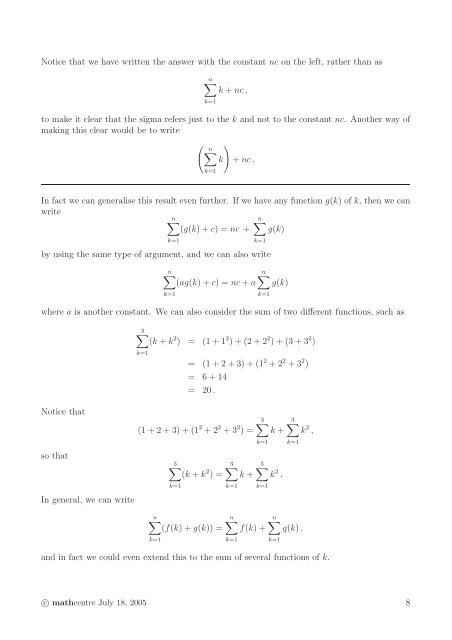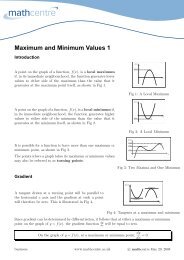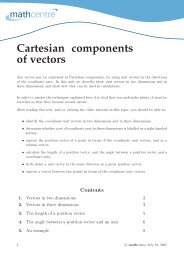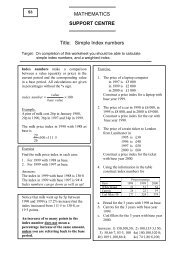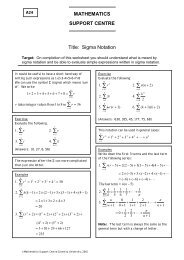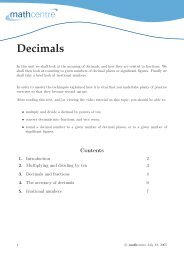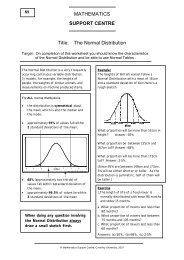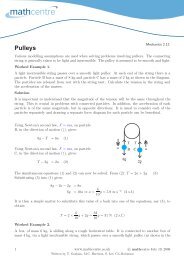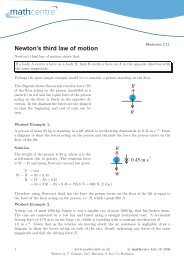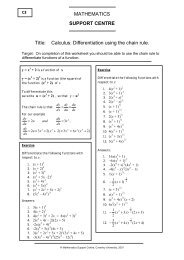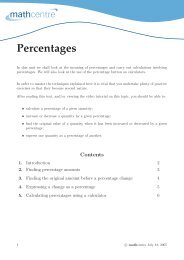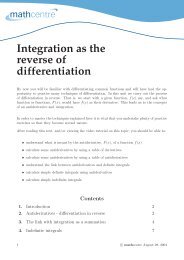Sigma notation - Mathcentre
Sigma notation - Mathcentre
Sigma notation - Mathcentre
Create successful ePaper yourself
Turn your PDF publications into a flip-book with our unique Google optimized e-Paper software.
Notice that we have written the answer with the constant nc on the left, rather than as<br />
n∑<br />
k + nc ,<br />
k=1<br />
to make it clear that the sigma refers just to the k and not to the constant nc. Another way of<br />
making this clear would be to write<br />
( n∑<br />
k=1<br />
k<br />
)<br />
+ nc .<br />
In fact we can generalise this result even further. If we have any function g(k) of k, then we can<br />
write<br />
n∑<br />
n∑<br />
(g(k) + c) = nc + g(k)<br />
k=1<br />
k=1<br />
by using the same type of argument, and we can also write<br />
n∑<br />
n∑<br />
(ag(k) + c) = nc + a g(k)<br />
k=1<br />
k=1<br />
where a is another constant. We can also consider the sum of two different functions, such as<br />
3∑<br />
(k + k 2 ) = (1 + 1 2 ) + (2 + 2 2 ) + (3 + 3 2 )<br />
k=1<br />
= (1 + 2 + 3) + (1 2 + 2 2 + 3 2 )<br />
= 6 + 14<br />
= 20 .<br />
Notice that<br />
so that<br />
In general, we can write<br />
3∑ 3∑<br />
(1 + 2 + 3) + (1 2 + 2 2 + 3 2 ) = k + k 2 ,<br />
k=1<br />
k=1 k=1<br />
k=1 k=1<br />
3∑<br />
3∑ 3∑<br />
(k + k 2 ) = k + k 2 .<br />
n∑<br />
(f(k) + g(k)) =<br />
k=1<br />
n∑ n∑<br />
f(k) + g(k) ,<br />
k=1 k=1<br />
and in fact we could even extend this to the sum of several functions of k.<br />
c○ mathcentre July 18, 2005 8


